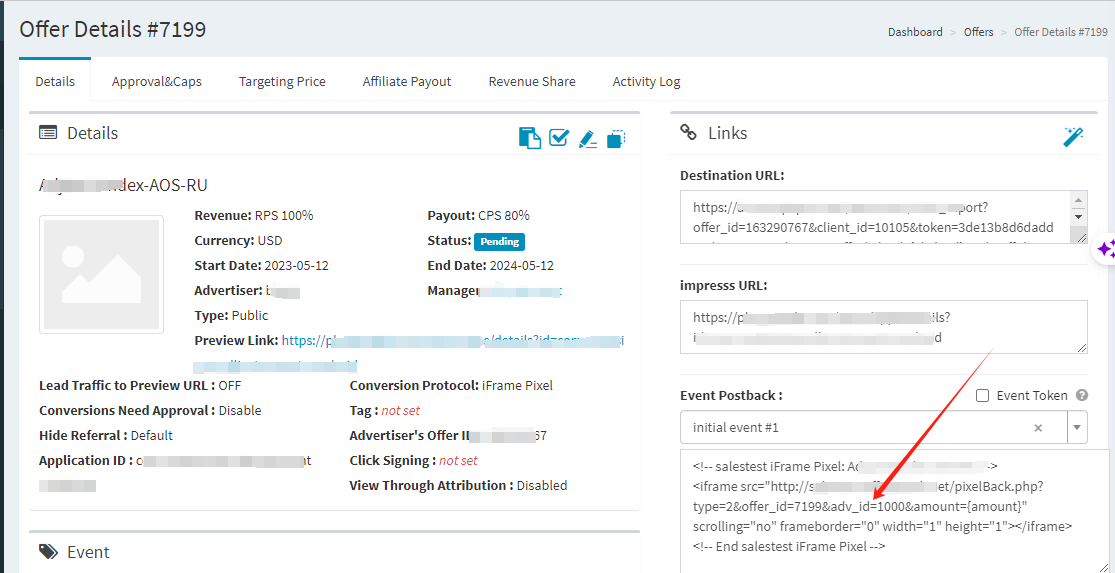In the dynamic world of affiliate marketing, tracking pixels have emerged as powerful tools for effectively analyzing and optimizing marketing campaigns. In this blog, we will delve into the concept of tracking pixels, explore their functionality, discuss the pros and cons associated with their use, and highlight the reasons why they are an indispensable asset in affiliate marketing. Let’s unravel the mysteries of tracking pixels and understand their significance in the industry.
What is a Tracking Pixel?
A tracking pixel, also known as a conversion pixel or a retargeting pixel, is a small, invisible snippet of code placed on a website or landing page. It enables advertisers or affiliate marketers to collect data and gain valuable insights into user behavior, conversions, and other metrics. This information is instrumental in optimizing campaigns and refining marketing strategies to drive desired outcomes.
How Does Tracking Pixel Work?
When a user visits a webpage with a tracking pixel, the code records and sends data to the tracking platform. This data can include information such as visitor demographics, browsing behavior, clicks, conversions, and more. The tracking pixel allows marketers to track the effectiveness of their campaigns, attribute conversions to specific sources, and make data-driven decisions to enhance their marketing efforts.
Pros and Cons of Tracking Pixel:
Let’s examine the advantages and disadvantages associated with using tracking pixels in affiliate marketing:
Pros:
- Accurate Conversion Attribution:
Tracking pixels provide precise data on conversions, allowing marketers to determine which channels or affiliates are generating the highest return on investment (ROI). This information aids in optimizing campaigns and allocating resources effectively.
- Enhanced Campaign Optimization:
With insights from tracking pixels, marketers can identify patterns, trends, and successful strategies, allowing for continuous optimization and improvement of marketing campaigns. This leads to increased efficiency and performance.
- Targeted Advertising and Retargeting:
Tracking pixels enable the creation of customized audiences based on user behavior. This allows marketers to target specific segments with personalized advertisements or engage in retargeting campaigns, maximizing the chances of conversions.
Cons:
- Privacy Concerns:
Some users may view tracking pixels as an invasion of privacy, as they collect and store data about their online activities. Marketers must ensure compliance with privacy regulations and obtain consent where necessary.
- Limited Attribution:
While tracking pixels provide valuable data on conversions, they may have limitations when it comes to tracking cross-device or offline conversions, potentially leading to inaccuracies or incomplete attribution.
- Technical Challenges:
Implementation of tracking pixels requires technical expertise. If not implemented correctly, pixel placement can cause website performance issues or conflicts with other codes, affecting the overall user experience.

Why Use Tracking Pixel?
Despite the challenges, there are compelling reasons to utilize tracking pixels in your affiliate marketing endeavors:
-
Data-Driven Decision Making:
Tracking pixels facilitate data collection and analysis, empowering marketers to make informed decisions based on accurate insights. This leads to improved campaign performance and ROI.
-
Performance Optimization:
By understanding user behavior and conversion patterns, affiliates can optimize landing pages, improve targeting strategies, and refine ad creatives to drive increased conversions and revenue.
-
Efficient Campaign Scaling:
Tracking pixels allow marketers to identify successful campaigns and replicate their strategies for scaling efforts. By focusing resources on high-performing campaigns or specific traffic sources, affiliates can expand their reach and maximize their profits.
advanced performance marketing software

click_idaff_id, IP, android_id, google_aid, click_time, click_ip, etc
Final Words:
In the ever-evolving landscape of affiliate marketing, tracking pixels have emerged as indispensable tools for collecting accurate data, optimizing campaigns, and driving success. While they come with potential challenges, the benefits of tracking pixels far outweigh those concerns. By utilizing tracking pixels effectively and adhering to privacy regulations, marketers can gain valuable insights, make data-driven decisions, optimize campaigns, and ultimately achieve their affiliate marketing goals. Embrace the power of tracking pixels and unlock the true potential of your affiliate marketing efforts.



